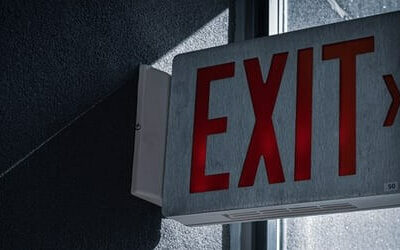What is NFPA 704
NFPA 704 is also known as the “Standard System for the Identification of the Hazards of Materials for Emergency Response.” This standard provides a widely-recognized system for hazardous material identification.
The National Fire Protection Association created and standardized the NFPA Fire Diamond— also known as the “safety square”—for emergency response. This icon allows first responders and firefighters to immediately assess the hazards in an emergency so they can make informed decisions about how to respond. This may include discerning when evacuation is necessary, how to extinguish a fire, how to clean up a chemical spill, and more.
However, the NFPA standard does not say when a hazard diamond is required or where it must be placed. Those requirements often come at a more local level.
The image shown above displays an example of a Fire Diamond along with a quick reference guide on how to read each section.
How to Read a Hazard Diamond
Here’s everything you need to know when assessing an NFPA diamond:
Yellow Definitions
The yellow section of an NFPA Fire Diamond identifies a material’s instability and reactivity.
- 0 = Stable even in fire exposure conditions
- 1 = Unstable at elevated temperatures or pressures
- 2 = Violent chemical change at elevated temperatures or pressures
- 3 = Explosive reactions in the presence of a strong initiating source, such as shock or heat
- 4 = Capable of detonation or explosion at normal temperatures and pressures, react explosively with water
Red Definitions
The red section of an NFPA Fire Diamond assesses a material’s flammability.
- 0 = Will not burn, even under typical fire conditions
- 1 = Materials that must be preheated before ignition can occur, including materials that have a flash point above 200°F
- 2 = Materials that must be moderately heated to ignite, including materials with a flash point below 200°F
- 3 = Materials that can be ignited at ambient temperatures, with a flash point below 100°F
- 4 = Materials which will vaporize at ambient temperatures and pressures, and will burn readily below 73°F
Blue Definitions
The blue section of an NFPA Fire Diamond identifies a material’s health hazard.
- 0 = Normal material that poses no hazard
- 1 = Slightly hazardous, can cause significant irritation
- 2 = Hazardous, including temporary incapacitation or residual injury
- 3 = Extreme danger, including serious or permanent injury
- 4 = Deadly
White Definitions
The white section of an NFPA Fire Diamond details a material’s specific and special hazards. This section differs from the other three because it can be blank if there are no special hazards. Three special notice symbols are included, along with several non-standard symbols that are widely recognized and may be required per local codes and standards.
Special symbols:
- OX = Oxidizer
- SA = Simple asphyxiant gas
- -W- = Reacts with water in a dangerous manner
Non-standard symbols:
- ACID = Acid
- ALK = Alkali
- BIO = Biohazard
- COR = Corrosive
- CRYO = Cryogenic
- POI = Poison
- ☢ = Radiation hazard
Where to Post NFPA Diamonds
A fire diamond is a very useful part of any organization’s overall disaster planning protocol. Ensuring that hazardous materials are well-labeled in a highly visible way is critical to safety. Emergency responders can take in vital information at a glance, evaluate the situation, and make informed decisions about the best way to secure the scene.
Knowing how and when to use an NFPA hazard diamond can prevent first responders from making deadly errors. For buildings that store hazardous materials, here are the best practices for displaying fire diamond placards:
- Follow local, state, or federal regulations for labeling hazardous materials.
- Placards should be located wherever firefighters may enter a building. The best practice is to place placards on at least two exterior walls, on doors to storage areas, and the main access to exterior storage.
- Fire diamonds should be large enough to be easily legible. The NFPA 704 standard lists size/distance requirements in Chapter 9.
- Label individual containers or tanks based on local regulations.
Fire diamonds are only one part of a comprehensive safety plan. While it is important for emergency responders to instantly take in critical information, planned evacuation routes and fire drills can help keep personnel safe long before firefighters arrive. Local authorities may have jurisdiction over your evacuation mapping, which can help them know what to expect before they arrive on the scene. Maps also must be easy to read and easy to use.
Creating clear maps, with evacuation routes that avoid hazardous materials, requires insight and expertise. Put the safety of your staff and visitors in the trusted hands of Building Maps, the security map experts.
Partnering With Building Maps
The illustration team at Building Maps is trained in OSHA, ICC, and NFPA standards and code. We create and maintain safety maps for organizations, businesses, and schools across the U.S. We have experience designing safety maps for facilities that hold hazardous materials and require NFPA diamond labeling. From fire evacuation and severe weather sheltering to security and campus mapping, we’ve got you covered.
Contact us today for a quick and free quote.

About the Author: Tony Jones, CFPS, is the owner and founder of Building Maps. He is a fire evacuation mapping and code compliance expert. Tony holds his work to the highest standard because he knows “it’s not just a map, it’s about saving lives.”





